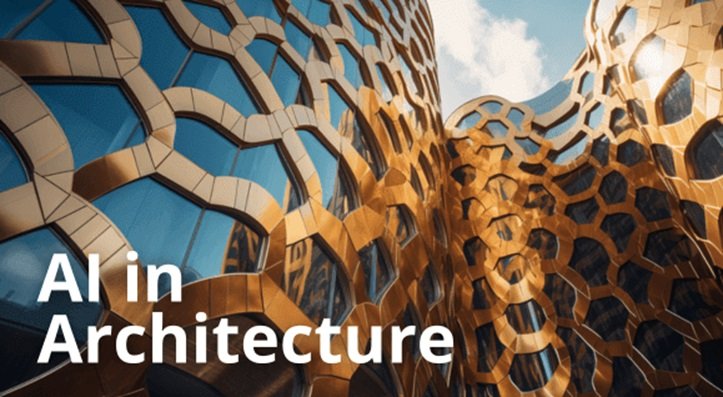Table of Contents
Introduction – AI in Architecture
Artificial intelligence (AI) is transforming industries across the globe, and architecture is no exception. As an architect, you might be wondering how AI can specifically benefit your practice. Well, let’s dive into how AI can revolutionize architectural design, project management, and client interactions, making your job not only easier but also more efficient and creative.
The Power of AI in Architectural Design
AI’s impact on architectural design is profound. Imagine having a virtual assistant that can help you generate multiple design options in minutes, complete with accurate renderings and data-driven insights. This isn’t a futuristic fantasy—it’s a reality with AI-powered design tools.
Example: Spacemaker AI
Spacemaker AI is a tool designed to help architects and urban planners optimize site development. It uses AI to analyze potential building sites, considering factors like sunlight, wind patterns, and noise levels. By inputting your design constraints, Spacemaker can generate multiple design alternatives, allowing you to choose the best option based on comprehensive data.
This kind of tool can save hours of manual analysis and provide insights that might be missed during traditional planning. For instance, if you’re designing a residential building, Spacemaker can help ensure that each unit gets optimal sunlight, enhancing the living experience for future residents.

Enhancing Project Management with AI
Project management is another area where AI can significantly improve efficiency. Keeping track of timelines, budgets, and resources can be a daunting task, but AI can help streamline these processes.
Example: ALICE Technologies
ALICE Technologies offers an AI-driven construction planning platform that helps architects and builders manage complex projects. ALICE can simulate different construction scenarios, allowing you to foresee potential delays and budget overruns before they happen. This proactive approach enables you to adjust plans accordingly, ensuring smoother project execution.
For example, if you’re working on a large commercial project, ALICE can simulate various construction schedules and resource allocations. By analyzing these simulations, you can identify the most efficient plan, reducing the likelihood of costly delays and ensuring the project stays within budget.
AI in Client Interaction and Collaboration
Client interaction and collaboration are crucial aspects of an architect’s work. AI can enhance these interactions by providing more accurate visualizations and fostering better communication.
Example: VR and AR Tools
Virtual reality (VR) and augmented reality (AR) tools are becoming increasingly popular in architecture. These technologies allow clients to experience designs in immersive environments, making it easier for them to visualize the final product.
Take the example of Enscape, a real-time rendering and VR plugin. Enscape allows architects to create detailed 3D visualizations that clients can explore through VR headsets. This immersive experience can help clients better understand your vision, leading to more informed feedback and smoother project approvals.
Imagine presenting a VR walkthrough of a proposed office building to your client. They can “walk” through the spaces, experiencing the design as if it were already built. This level of interaction can help bridge the gap between your ideas and the client’s expectations, resulting in a more collaborative and satisfying design process.

AI for Sustainable Design
Sustainability is a growing concern in architecture, and AI can play a significant role in promoting eco-friendly designs. By analyzing environmental data and predicting the long-term impact of different materials and design choices, AI can help architects create more sustainable buildings.
Example: Tally
Tally is a tool that integrates with popular design software to provide real-time data on the environmental impact of building materials. It helps architects make informed decisions about material selection, ensuring that designs are not only aesthetically pleasing but also environmentally responsible.
For instance, if you’re designing a new school building, Tally can analyze the carbon footprint of various materials and construction methods. This analysis allows you to choose the most sustainable options, contributing to a greener future.
Conclusion – AI in Architecture
AI is not just a buzzword—it’s a powerful tool that can enhance every aspect of architectural practice. From design and project management to client interaction and sustainability, AI offers numerous benefits that can help architects work smarter and more creatively.
As you consider integrating AI into your practice, remember that it’s not about replacing the human touch but augmenting your skills with advanced technology. By embracing AI, you can stay ahead of the curve, delivering innovative and efficient solutions that meet the evolving demands of the architectural landscape.
So, why not explore the AI tools available and see how they can transform your practice? The future of architecture is here, and it’s brimming with exciting possibilities.




Leave a Reply